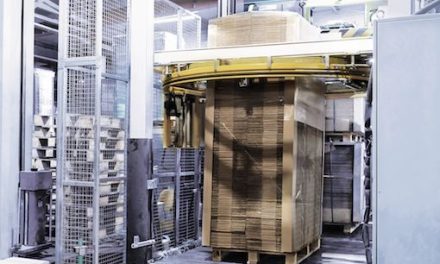 Working alongside market-leading logistics specialist Witron, Lenze has been monitoring the performance and reliability of more than 5,000 electromechanical drives and 2,200 inverters installed at the EDEKA logistics centre in Hamm, Germany.
Working alongside market-leading logistics specialist Witron, Lenze has been monitoring the performance and reliability of more than 5,000 electromechanical drives and 2,200 inverters installed at the EDEKA logistics centre in Hamm, Germany.
The goal of this ten-year study, which culminated last year, was to gather information on the reliability and service life of the drives and inverters, as well as any malfunctions and their consequences. The data gathered is expected to improve the overall performance of logistics systems, which has previously been subject to trial and error.
The 90,000m2 EDEKA logistics centre houses 20,000 different products and despatches around 400,000 items per day to supermarkets throughout Germany. According to Hans Lowartz, who heads up Witron’s onsite team and who is responsible for the systems at this facility, equipment availability is currently running at an impressive 98.8%.
The study provided crucial information on when preventive maintenance had to be carried out or when items of equipment had to be replaced. “This was a very intensive joint project with Lenze,” recalls Witron’s onsite maintenance manager, Joachim Mehl. “We learned a great deal from it and gained considerable insights into how we might improve equipment specification for these warehouse applications.”
For example, it was discovered that geared motors with direct mains connection and using high-inertia, cast-iron fans to achieve soft starting were not an efficient solution. Cast-iron fans smooth the acceleration ramps due to their increased inertia but this means the drive has to work harder when starting and brakes were wearing out prematurely. Though it added complexity, electronic methods of soft starting proved the better solution.
An opportunity arose to trial Lenze’s Smart Motor, an easy-to-programme, compact drive incorporating motor, electronics and gearbox in a single unit that doesn’t require external contactors or soft starts. This flexibility means that a single Smart Motor can be used for a variety of conveyor applications. The first 100 units are now in use and the next 100 are to be installed in the near future.
According to Lowartz, the size and complexity of the Hamm facility proved ideal for this long-term field observation project. The data was reliable and regularly used in the planning of large-scale maintenance activities; they are also expected to help the team with future modernisation plans.
Lenze has also profited from the results, as Lenze’s Intra-logistics key account manager, Jörg Krampe concludes: “Whenever an incident occurred, we had detailed information on the operating conditions and running times, enabling accurate assessments to be made of equipment reliability and service life. Using this information, Lenze is thus able to customise its products specifically for warehouse operations and subsequently manufacture them in large production volumes.”

